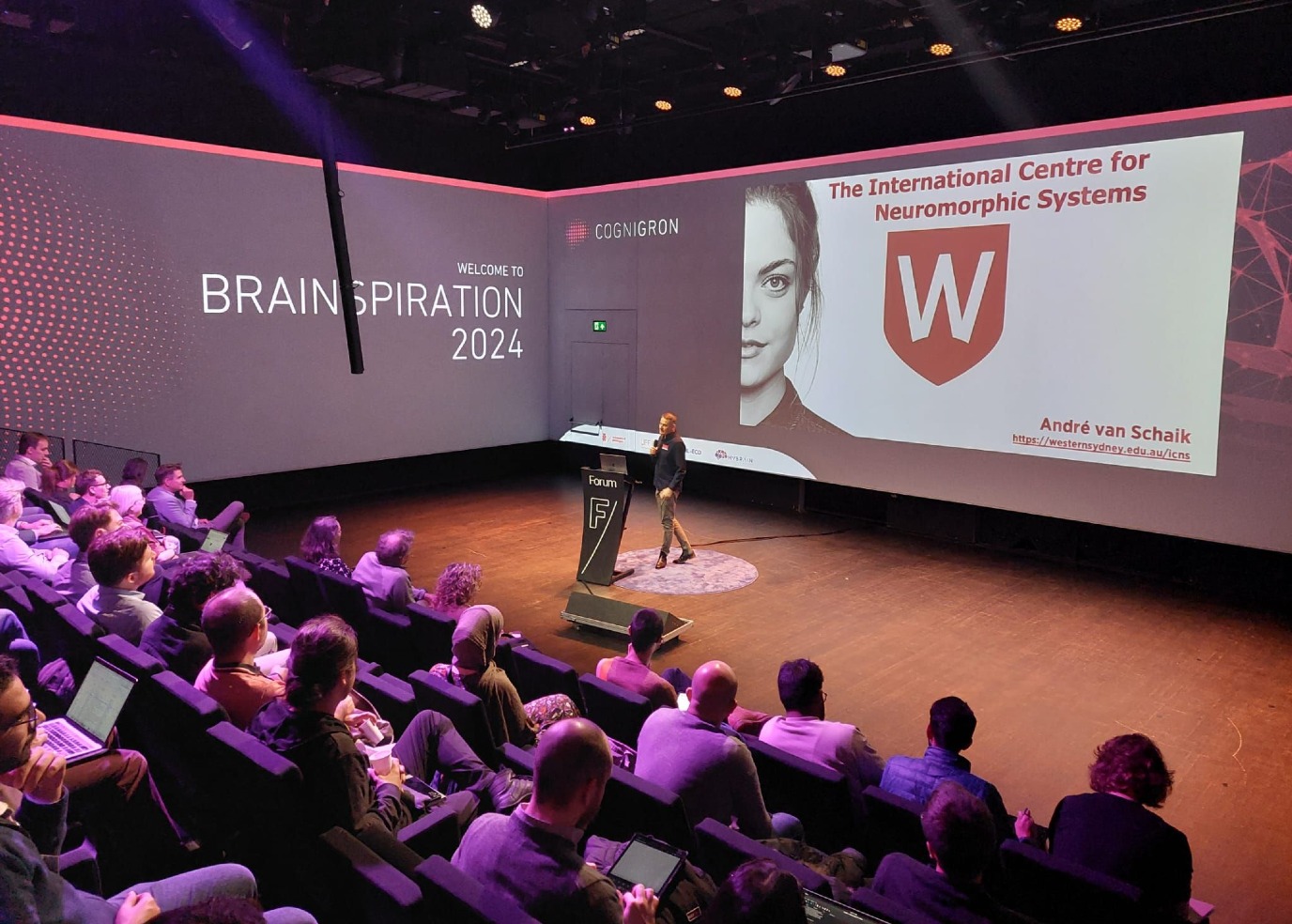Honorary Professorship for André van Schaik

In November this year, the University of Groningen (UG) appointed André van Schaik as an honorary professor at the Faculty of Science and Engineering. We are happy to welcome him to CogniGron, where he will work on neuromorphic circuit design and computational neuroscience, complementing the activities of Elisabetta Chicca, Erika Covi, Matthew Cook and others. The main project he has is on tactile sensing where they will have joint PhD students between the UG, Western Sydney University (WSU) and IIT in Genoa.
His collaborations with CogniGron researchers, his vision on neuromorphic computing and his leadership as Director of the International Centre for Neuromorphic Systems, at the WSU, have motivated his nomination as Honorary Professor. A memorandum of understanding between the two universities is already in place, and his appointment will further reinforce this collaboration between the two universities.
“I’m very much looking forward to the collaboration between CogniGron and ICNS, particularly on building novel neuromorphic sensors. At ICNS we have a strong track record on neuromorphic sensing and algorithms, but we have no expertise in materials and devices. CogniGron complements us very nicely, and through Elisabetta’s BICS lab, we have local partners that are aligned with our research interest.” – André van Schaik
André is affiliated with Zernike Institute, as part of the BICS (Bio-inspired Circuits and Systems) group of Prof. Elisabetta Chicca, and his fields of expertise are Neuromorphic Engineering, Computational Neuroscience and Event-Based Vision.
Earlier this year he gave a talk on ‘Applications of Neuromorphic Engineering at the International Centre for Neuromorphic Systems’ at Brainspiration in Groningen, which entailed the research done at The International Centre for Neuromorphic Systems (ICNS) and progress with their neuromorphic supercomputer. In addition, he visited CogniGron in April to give a seminar on the first brain-scale supercomputer, DeepSouth, developed by the International Centre for Neuromorphic Systems (ICNS) at WSU.
Congratulations on your honorary professorship, André and welcome to CogniGron!

Andre’s curriculum vitae
André van Schaik received the M.Sc. degree in electrical engineering from the University of Twente, Enschede, The Netherlands, in 1990 and the Ph.D. degree in electrical engineering from the Swiss Federal Institute of Technology (EPFL), Lausanne, Switzerland, in 1998.
He has authored more than 300 publications, invented more than 35 patents, and is a founder of four start-up companies: VAST Audio, Personal Audio, Heard Systems, and Optera Solutions.
In 1998, he was a postdoctoral research fellow in the Department of Physiology at the University of Sydney, funded by a fellowship from the Garnett Passe and Rodney Williams memorial foundation. In 1999, he became a Senior Lecturer in the School of Electrical and Information Engineering at the University of Sydney and promoted to Reader in 2004.
In 2011, he became a research professor at Western Sydney University and leader of the Biomedical Engineering and Neuromorphic Systems (BENS) Research Program in the MARCS Institute for Brain, Behaviour, and development. In 2018, he became the Director of the International Centre for Neuromorphic Systems. In 2024, he took up the role of Chief Technology Officer at Optera and, also in 2024, was appointed as honorary professor at the University of Groningen.
His research focuses on neuromorphic engineering and computational neuroscience.
| Last modified: | 10 December 2024 09.25 a.m. |
More news
-
24 March 2025
UG 28th in World's Most International Universities 2025 rankings
The University of Groningen has been ranked 28th in the World's Most International Universities 2025 by Times Higher Education. With this, the UG leaves behind institutions such as MIT and Harvard. The 28th place marks an increase of five places: in...
-
05 March 2025
Women in Science
The UG celebrates International Women’s Day with a special photo series: Women in Science.
-
16 December 2024
Jouke de Vries: ‘The University will have to be flexible’
2024 was a festive year for the University of Groningen. In this podcast, Jouke de Vries, the chair of the Executive Board, looks back.
